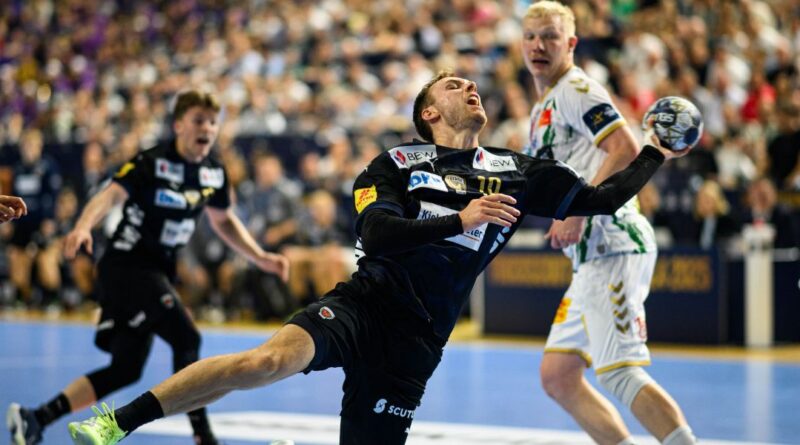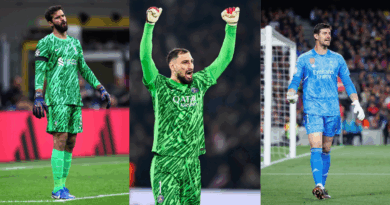Mathias Gidsel played two months with a broken sternum
The new book “Gidsel og Pytlick, verdens bedste makkerpar,” written by Danish journalist Troels Mylenberg, explores the rise of national team stars Mathias Gidsel and Simon Pytlick. The two players have become central figures in both Danish and international handball, lifting trophies at club and national level while shaping a partnership built on speed, improvisation and a shared understanding on court.
Among the book’s revelations is a detail Gidsel himself did not notice at the time, he unknowingly played for weeks with a fractured sternum during one of the busiest periods of his season. The injury was discovered only during a routine medical check ahead of the 2024 Olympics.
A turning point after the PCL tear
In interviews and book excerpts published by TV 2 Sport, Gidsel describes the moment in 2022 when he realised that the pain he felt during the European Championship bronze match was something far more serious than a minor knock. The scan that followed in Denmark showed a torn posterior cruciate ligament, a rare but demanding injury for elite handball players.
The setback threatened his hope of reaching the Danish league final with GOG, the club where he and Pytlick had gained national attention. At the time, the final was only a few months away, and the recovery timeline looked too long. As he recounts in the book, the helplessness of those first days marked the first time he truly feared being sidelined for a significant stretch of his career.
Read also: Ronaldo’s private gift to Jota family revealed
Rehabilitation on unfamiliar terms
Once back in Odense, Gidsel began working with two physiotherapists who suggested a more individualised rehabilitation program than the conventional route provided by the university hospital. Instead of following the standard six to nine month protocol, they introduced gradual movement earlier than usual, adjusting his locked knee brace with a simple hex key so the joint could bend in controlled steps.
He spent most days with them, lifting weights, rebuilding strength and learning to understand his body in a new way. Much of the period was shared between long workouts, simple meals and the slow process of regaining control over the injured leg. The monotony, he says in the book, created the structure he needed at a time when both his mobility and private life felt unstable.
A new understanding of limits
The long rehabilitation changed how Gidsel viewed preparation and performance. He trained alone before and after his scheduled sessions, sometimes pushing himself to the point of nausea, something he later described not as a goal but as an unexpected side effect of trying to redefine his boundaries.
The mindset connected back to his youth years at GOG, where intense training sessions underlined that physical limits can move if the work is consistent enough. The difference now, he says, was that he began to understand how strength, nutrition and recovery work together during a long season in the Bundesliga or at major championships.
Read also: Injury ends Neymar’s season early
The unnoticed fracture
By the time Gidsel was established at Füchse Berlin, he had become known for playing through minor knocks that accumulate during a crowded schedule. But even he was surprised when a medical scan ahead of the 2024 Olympics showed a previously untreated fracture in his sternum.
The break had already begun to heal, and he had felt no sharp pain at the time. In Mylenberg’s book, he recalls the doctor asking whether he had ever broken his sternum, he said no, and was told that he actually had. He continued the season after the Olympics with only minor discomfort, something he attributes to the natural adrenaline players often experience during matches.
Balancing professionalism and normal routines
Gidsel has become one of the most influential players of his generation, combining agility, timing and a distinctive playing style that depends heavily on acceleration and body control. Yet he often repeats that he does not follow strict dietary regimens beyond avoiding alcohol during the season.
He remembers sitting with Henrik Møllgaard at the Tokyo Olympics in 2021, discussing how Danish players, who do not always look like stereotypical “super athletes,” manage to dominate the sport. Møllgaard told him, we have found our own way to be the best, a comment Gidsel still thinks about when discussing preparation and personal routines.
Read also: Surprise name leads the race to replace Arne Slot after PSV thrashing
The partnership behind the success
The book devotes significant attention to his connection with Simon Pytlick, now one of Denmark’s most promising backs. Their careers have crossed repeatedly, from youth teams in GOG to national-team tournaments where Denmark collected several world titles and the Olympic gold in 2024.
While their styles differ, their understanding of timing and movement has been central to Denmark’s attack for several years. Mylenberg’s book explores how their contrasting personalities, training habits and competitive instincts helped form what he frames as one of the strongest partnerships in modern handball.




